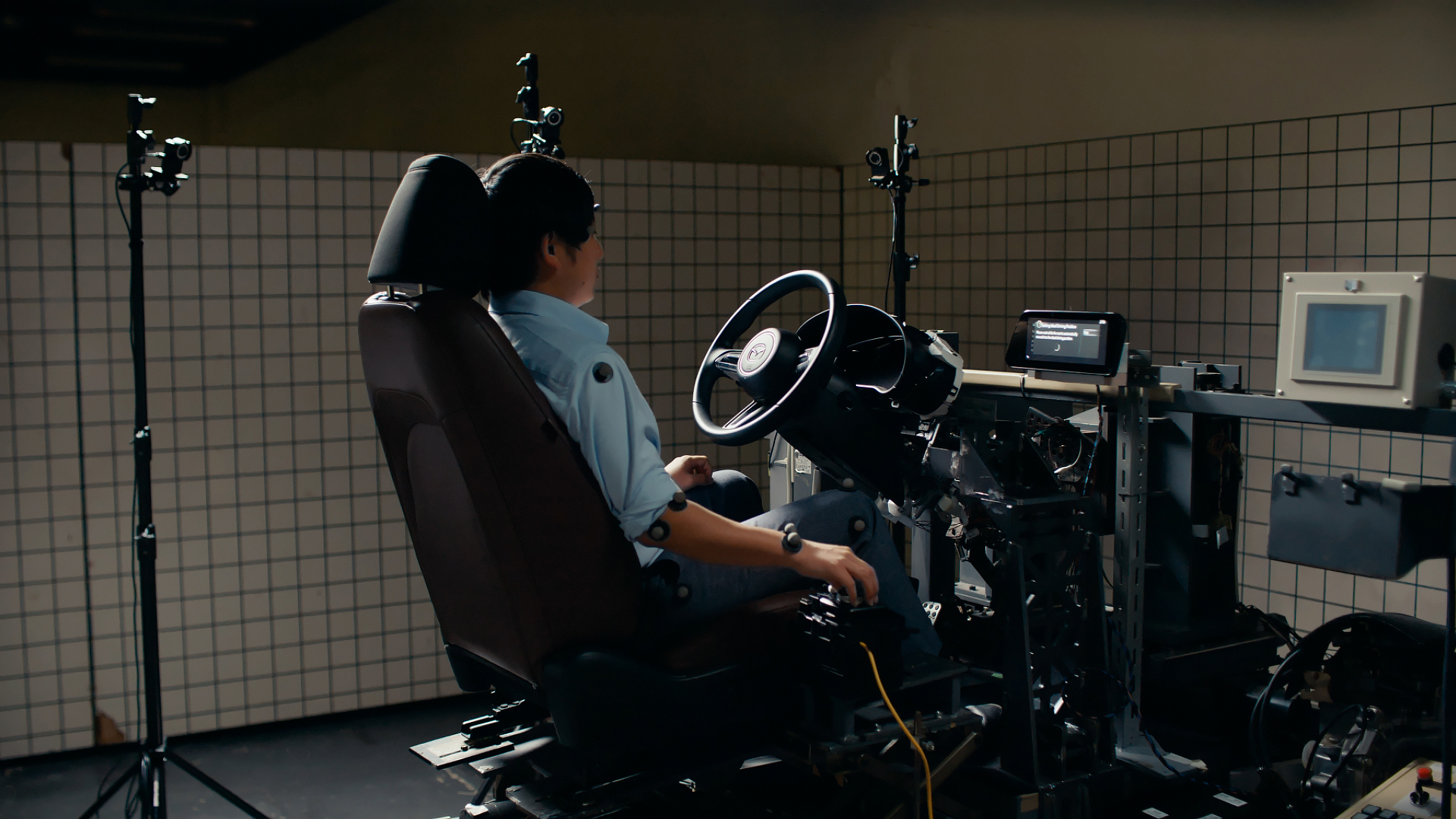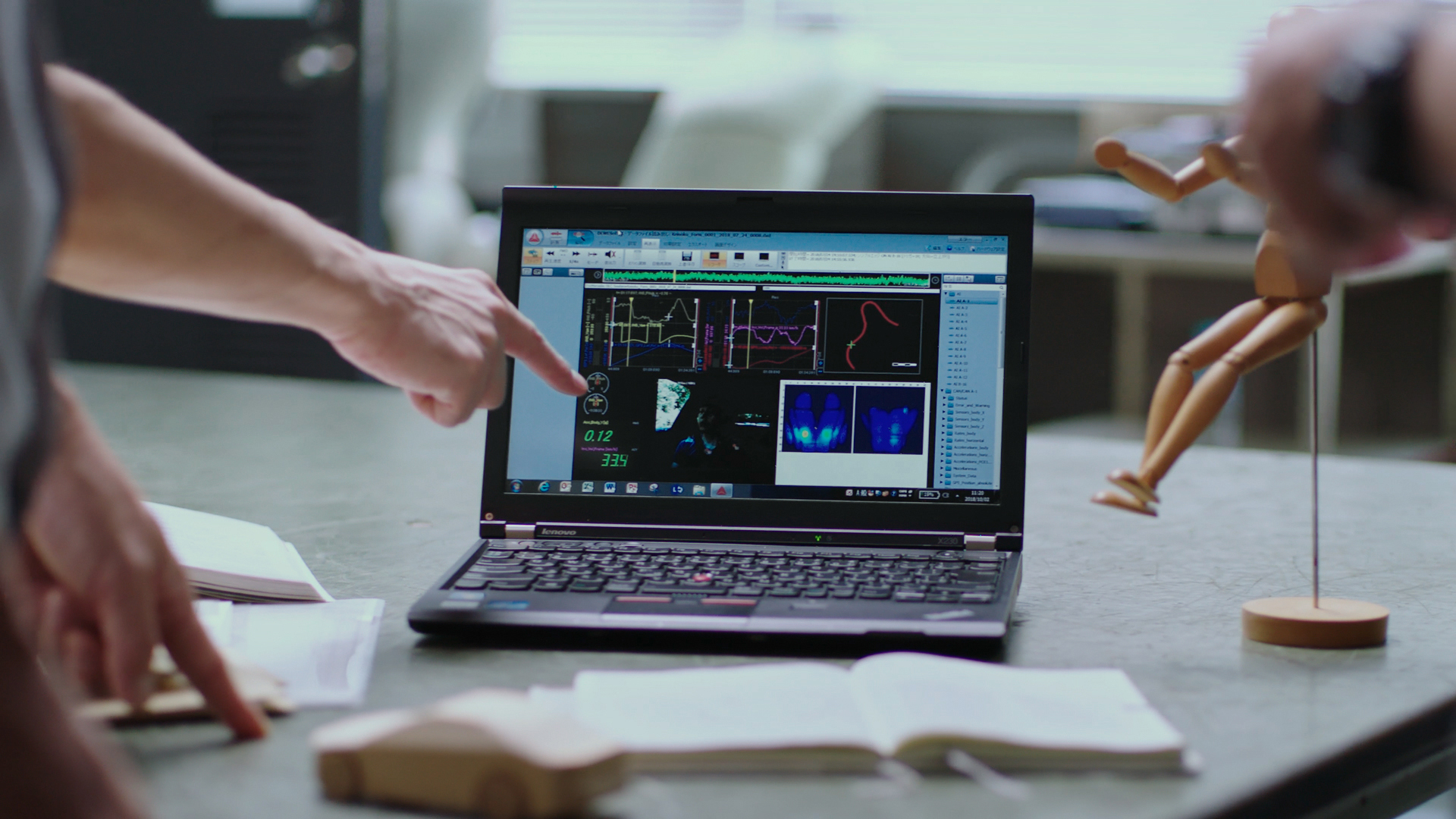Find out more
HUMAN-CENTRICITY IN ACTION
The proof of Mazda’s superb design and engineering skills is in its unique range of vehicles
Mazda’s unique personalisation system ensures everyone can enjoy the perfect driving position. Using cutting-edge facial-recognition technology, the process delivers tailored recommendations to maximise both comfort and safety.
Words Nik Berg
The optimum positioning of the driver has always been a key component in any Mazda vehicle’s development. However, Mazda researchers recently discovered that less than half of drivers position themselves correctly for comfort, safety and control. The solution? The new Mazda CX-60.
Following Mazda’s human-centric philosophy, which considers every touchpoint in the car, from the shape and action of door handles to the feel of the switchgear, the next step was to ensure that drivers are always seated correctly.
Nobuaki Tabata, Programme Manager for Electric/Electronic (E/E) Architecture in the Integrated Control System Development Division, and his team discovered that most drivers were not aware of how to achieve the best driving position for themselves. “During the development of the Mazda CX-60 we found that people did not know how to adjust the driving seat position to achieve optimum levels of comfort. In fact, we have research data that states only 40 per cent of drivers are seated correctly,” he says.

To solve this problem, Mazda developed a system that recognises each driver and automatically configures the position of the seat, steering wheel, mirrors and head-up display for optimum comfort and safety.
The system uses a camera facing the driver to enable physique-estimation technology. After the driver has entered their height manually with the commander control dial (this only needs to be done on the very first set up), the system then calculates and offers the best placement for that person based upon the position of their eyes. Of course, the driver can override and modify the position if they want to.
And when the driver switches off the engine and releases the seat belt buckle, the seat and steering wheel automatically reset, allowing them to get out of the car more easily.

“We developed this function using a vast amount of data,” explains Tabata. “Once facial recognition has identified the driver, the system based on our physique estimation can suggest how the seating position should be adjusted. It’s like coaching the driver based on the experience of the manufacturer.”
And setting the perfect driving position is just the beginning. “Roughly speaking, there are more than 100 personalisation items prepared for this car using the facial-recognition system,” Tabata continues. “Other examples include the individual adjustments of sound, the volume of safety alerts, and the ambient lighting, which can be tuned and adjusted for specific drivers.”
With this ingenious facial-recognition technology, Mazda is seeking to reduce driver stress before the journey has even begun. In doing so, driving in the Mazda CX-60 is not only safer but also more relaxing and entertaining for everyone, with driver and passengers alike enjoying increased peace of mind.
Find out more
The proof of Mazda’s superb design and engineering skills is in its unique range of vehicles